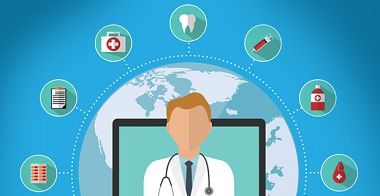
Telemedicine is revolutionizing the way medical care is delivered. By allowing patients to consult with healthcare professionals remotely, it eliminates the need for physical visits to clinics and hospitals. The use of technology in healthcare has advanced rapidly in recent years, paving the way for telemedicine to become an integral part of the future of medical care.
The Benefits of Telemedicine
There are numerous benefits associated with telemedicine. One of the most significant advantages is increased access to healthcare services, especially for individuals living in remote or rural areas. Telemedicine allows patients to receive medical consultations from the comfort of their own homes, saving them time and the logistical challenges of travel.
Furthermore, telemedicine improves patient engagement and satisfaction. Research shows that patients appreciate the convenience and flexibility it offers, particularly for routine check-ups or follow-up consultations. The ability to access healthcare professionals through video calls or secure messaging platforms promotes better communication and enhances the patient experience.
Another benefit of telemedicine is that it reduces healthcare costs. By eliminating the need for in-person visits, patients save on transportation and associated expenses. Additionally, healthcare providers can operate more efficiently, as remote consultations require fewer resources compared to traditional in-person appointments.
The Role of Technology in Telemedicine
Technology plays a crucial role in the success of telemedicine. From secure video conferencing software to electronic health records, various technological tools ensure the seamless and secure delivery of medical services.
One of the key technologies used in telemedicine is video conferencing. Platforms like Zoom or Webex enable face-to-face consultations between patients and healthcare professionals, simulating an in-person visit. This real-time interaction allows for accurate assessments and diagnosis, while also fostering a personal connection between patients and doctors.
Electronic health records (EHRs) are another essential component of telemedicine. EHRs store patients’ medical history, test results, and treatment plans in a digital format, accessible to both the patient and healthcare provider. This enables healthcare professionals to have a comprehensive view of the patient’s health, regardless of their location.
Moreover, mobile health apps have become increasingly popular in telemedicine. These apps enable patients to monitor vital signs, track symptoms, and manage their healthcare routines from the convenience of their smartphones or wearable devices. This data can then be easily shared with healthcare providers for remote assessment and monitoring.
Challenges and Considerations
While telemedicine offers boundless opportunities, there are also challenges and considerations that need to be addressed. One of the primary concerns is ensuring patient privacy and data security. It is crucial for healthcare providers to implement robust security measures to protect patients’ personal health information, especially when utilizing digital platforms.
Another challenge is the potential for misdiagnosis or inadequate treatment over telemedicine. While video consultations can be highly effective, there are limitations compared to in-person assessments. Healthcare professionals need to be mindful of these limitations and determine when an in-person consultation is necessary to provide the best possible care.
Furthermore, the digital divide presents a significant barrier to telemedicine adoption. Not everyone has access to reliable internet connectivity or the necessary technology devices. Bridging this gap is essential to ensure equitable access to telemedicine services and to prevent further healthcare disparities.
The Future of Telemedicine
The future of telemedicine is promising. As technology continues to evolve, telemedicine solutions will become even more accessible, reliable, and user-friendly. Advances in artificial intelligence and machine learning may enable remote diagnosis and treatment recommendations based on vast data analysis.
Additionally, telemedicine is likely to expand beyond primary care and consultations. Specialized fields such as mental health, dermatology, and radiology have already seen substantial growth in telemedicine services. As more healthcare providers embrace telemedicine, the range of services offered will continue to expand.
In conclusion, telemedicine is revolutionizing the way medical care is delivered. Through the use of technology, it provides increased access, convenience, and cost-effectiveness. While challenges exist, the future of telemedicine holds great potential for improved healthcare outcomes and patient satisfaction.

